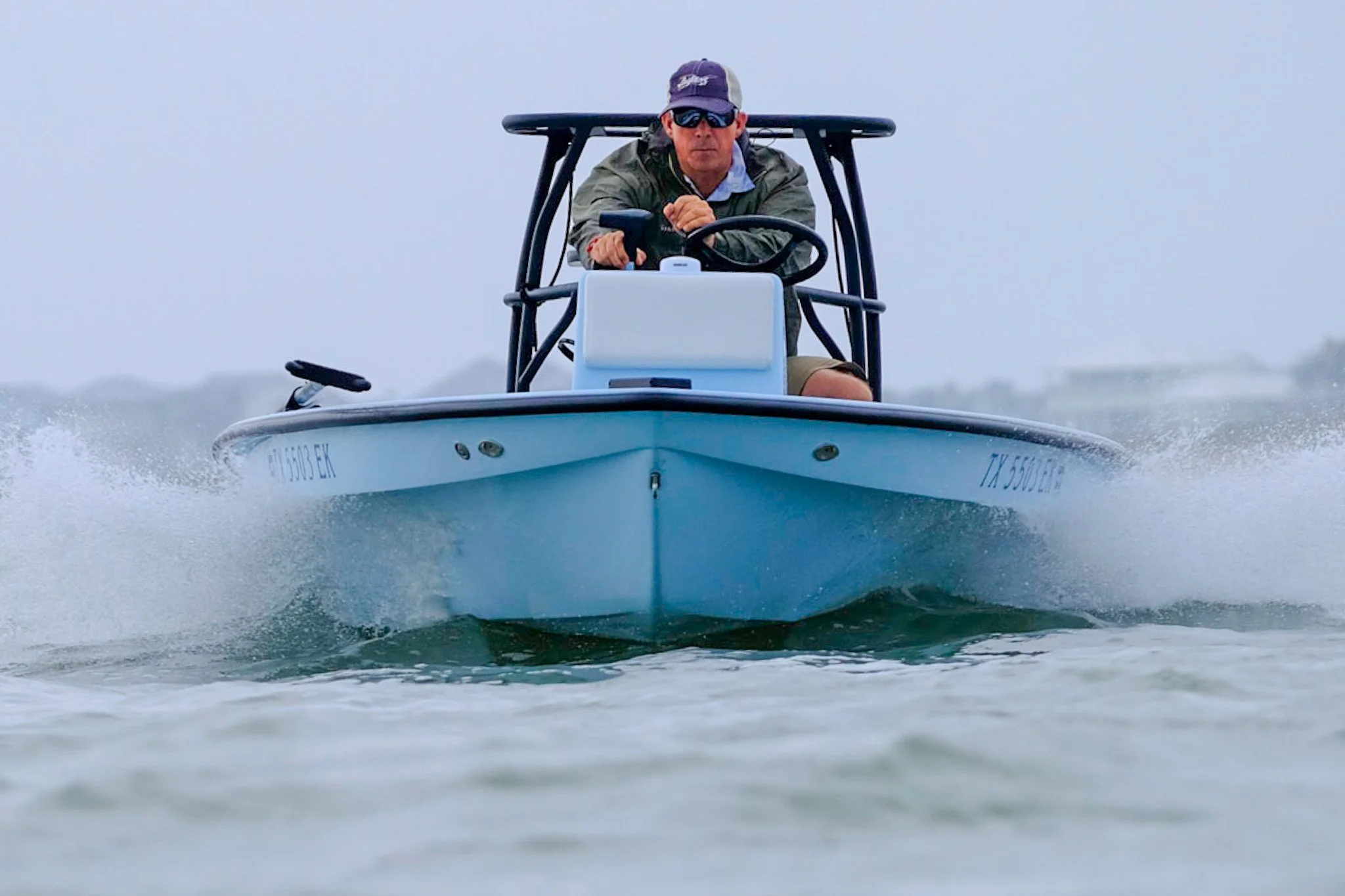5 key features of a great skiff
By Hal Chittum
Feature #1:
The number one item on the design list is that the skiff must float LEVEL with all of the equipment, anglers, engine fuel and gear. If the skiff is floating with the stern low the draft will be greatly increased, the skiff wil make more noise in the water, it will not spin well and the bow will tend to blow around in the wind. The stern is the heaviest part of an outboard boat because it must be strong enough too carry the engine. With the weight of a person on top of the poling platform this adds even more weight to the stern. A skiff must carry the fuel weight as far forward as possible to counterbalance the weight on the stern. The lighter a skiff can be constructed the easier it will be to make it float level. A heavier skiff will need a larger engine which will make it impossible to keep the stern floating high. Lightweight construction allows the skiff to be powered with a lower horsepower engine which is much lighter. A light skiff with a lighter engine will also require less of a fuel load. Weight is the enemy on a flats skiff.
Feature #2:
A skiff needs to be dry running even in big water. We spent a tremendous amount of time to finally come up with spray rails that actually work. These spray rails make zero noise when poling or at anchor. We have tried every possible combination of designs and these sprayrails are the only way to keep dry when running but not make noise that spooks fish when poling or at anchor.
Feature #3:
The old belief that “A boat needs to be heavy to ride well” is 100% incorrect! The military found this was the case years ago and they build high performance boats to deliver Navy Seals and other special operators with the same type of construction that we use. There is no combination of materials and technology that can build a skiff that is too light. The skiff will need to carry two or more people, an engine, fuel, trolling motor, multiple batteries and other gear. The lighter we can build the skiff, the better it does everything.
Feature #4:
The hull shape must perform a number of different tasks very well. It must allow the skiff to run dry in adverse conditions. It must be exceedingly quiet around fish in all conditions. In the past, the designs that could keep a skiff running dry would also make it extremely noisy and spook fish at a distance. After years of testing we found the combination that makes the skiff very dry running AND be very quiet around fish. We built and water tested many designs before we found one that does everything we could ask for. Our hull deigns will allow the skiff to make a 360 degree spin with one push of the pole, this allows the person on teh push pole to quickly and silently spin the skiff at the last second to give the angler the perfect angle for the shot. When most skiffs are being poled or on the trolling motor, it creates noise and a pressure that will alert and spook a fish a long distance away from the skiff. We spent a great deal of time to virtually eliminate this problem with the pressure wave and the hull noise. These are just a few of the reasons our skiffs will most of the tournaments in the Keys and other areas.
Feature #5:
The finest skiffs and boats in the world are built with carbon fiber. All of our skiffs have quite a bit of carbon and most of them are 100% carbon. This is the finest type of construction when combined with best structural cores and superior resins. Skiffs built this way will last a very long time. They are extremely durable and very light. All of the requirements are there to build a great skiff. They are extremely easy to pole, have very shallow draft, are very stealthy and have a dry ride. All of this is made possible by a great design combined with the use of carbon fiber and the best components.




